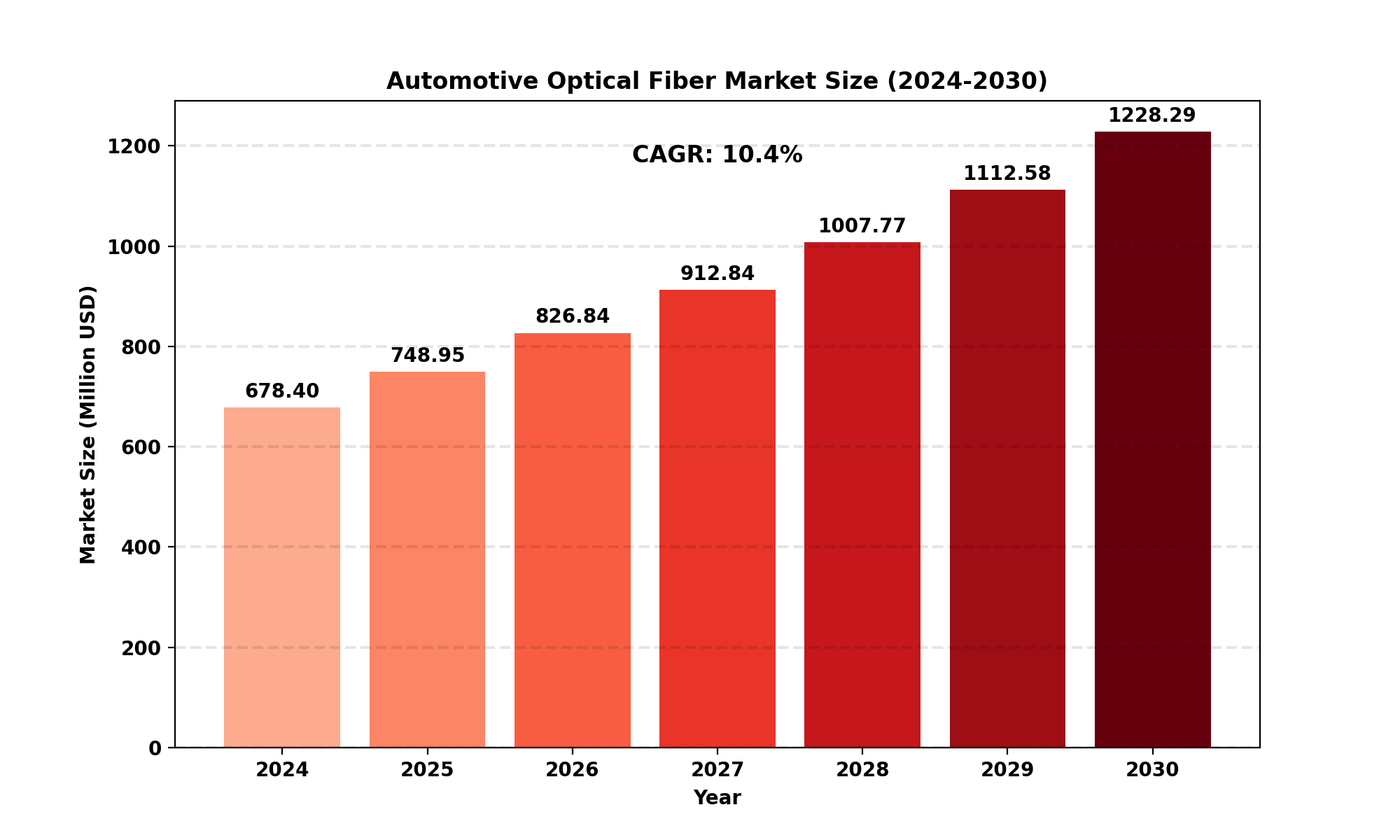TOP CATEGORY: Chemicals & Materials | Life Sciences | Banking & Finance | ICT Media
The global Automotive Optical Fiber market size was valued at US$ 678.4 million in 2024 and is projected to reach US$ 1.22 billion by 2030, at a CAGR of 10.4% during the forecast period 2024-2030.
The United States Automotive Optical Fiber market size was valued at US$ 187.2 million in 2024 and is projected to US$ 328.5 million by 2030, at a CAGR of 9.8% during the forecast period 2024-2030.

Automotive Optical Fibers are high-speed data transmission cables used in vehicles for various applications including infotainment systems, advanced driver assistance systems (ADAS), and in-vehicle networks.
The global Automotive Optical Fiber market is growing rapidly, driven by the increasing complexity of in-vehicle electronics and the need for high-bandwidth data transmission. In 2023, total fiber length deployed reached 450 million meters, with infotainment systems accounting for 40% of market value. The market saw a 35% increase in demand for plastic optical fibers (POF) in 2023, due to their cost-effectiveness and ease of installation. Glass optical fibers still dominate with a 70% market share, but POF is growing at 12% annually. Europe leads with a 38% market share due to the high adoption of premium vehicles with advanced electronics, while Asia Pacific is the fastest-growing region at 11.5% CAGR. The industry is focusing on developing bend-insensitive fibers for easier routing in vehicles, with a 30% increase in R&D investments for such technologies.
Report Overview
An optical fiber or optical fibre is a flexible, transparent fiber made by drawing glass (silica) or plastic to a diameter slightly thicker than that of a human hair.
This report provides a deep insight into the global Automotive Optical Fiber market covering all its essential aspects. This ranges from a macro overview of the market to micro details of the market size, competitive landscape, development trend, niche market, key market drivers and challenges, SWOT analysis, value chain analysis, etc.
The analysis helps the reader to shape the competition within the industries and strategies for the competitive environment to enhance the potential profit. Furthermore, it provides a simple framework for evaluating and accessing the position of the business organization. The report structure also focuses on the competitive landscape of the Global Automotive Optical Fiber Market, this report introduces in detail the market share, market performance, product situation, operation situation, etc. of the main players, which helps the readers in the industry to identify the main competitors and deeply understand the competition pattern of the market.
In a word, this report is a must-read for industry players, investors, researchers, consultants, business strategists, and all those who have any kind of stake or are planning to foray into the Automotive Optical Fiber market in any manner.
Global Automotive Optical Fiber Market: Market Segmentation Analysis
The research report includes specific segments by region (country), manufacturers, Type, and Application. Market segmentation creates subsets of a market based on product type, end-user or application, Geographic, and other factors. By understanding the market segments, the decision-maker can leverage this targeting in the product, sales, and marketing strategies. Market segments can power your product development cycles by informing how you create product offerings for different segments.
Key Company
Market Segmentation (by Type)
Market Segmentation (by Application)
Geographic Segmentation
Key Benefits of This Market Research:
Key Reasons to Buy this Report: